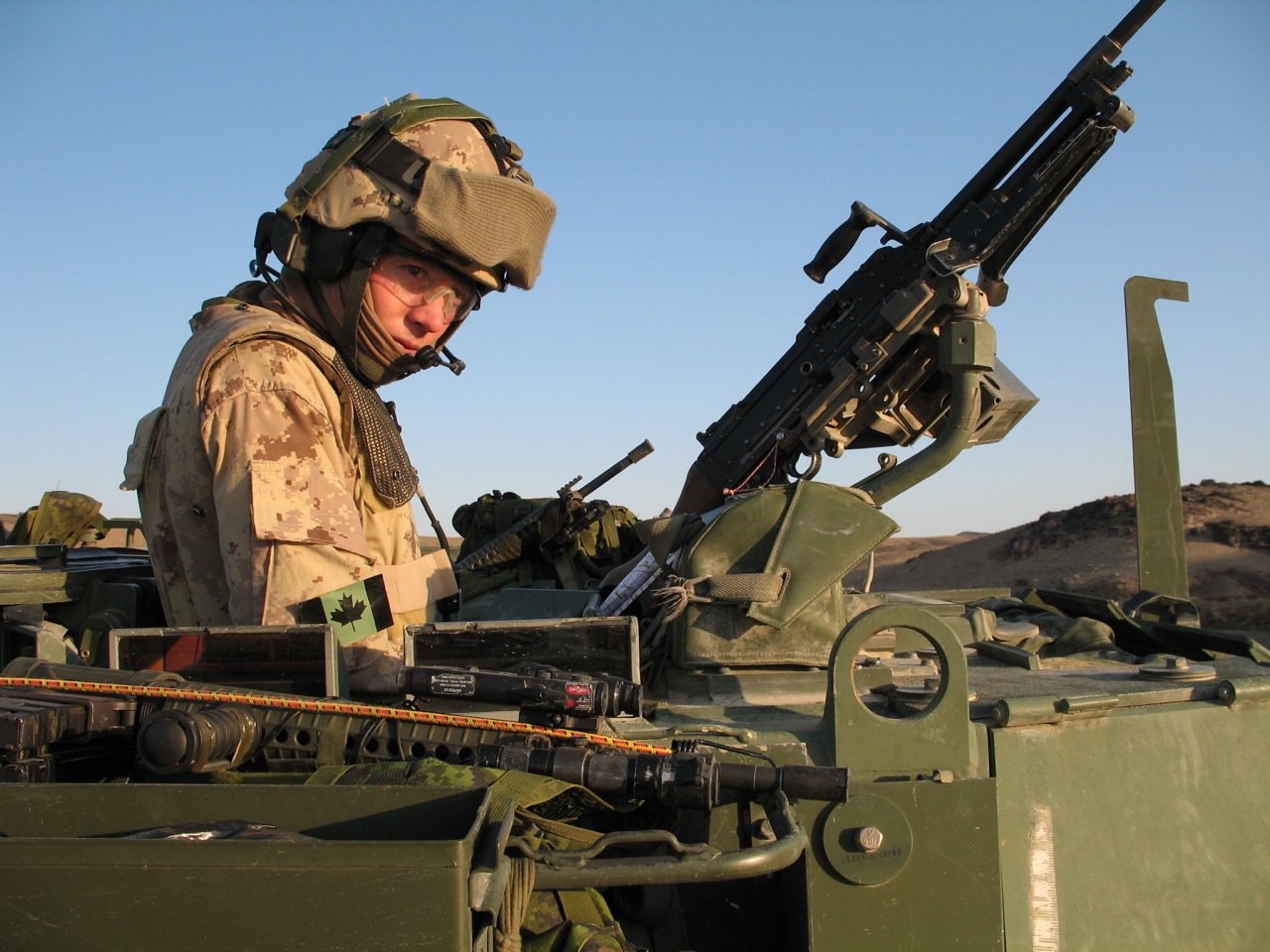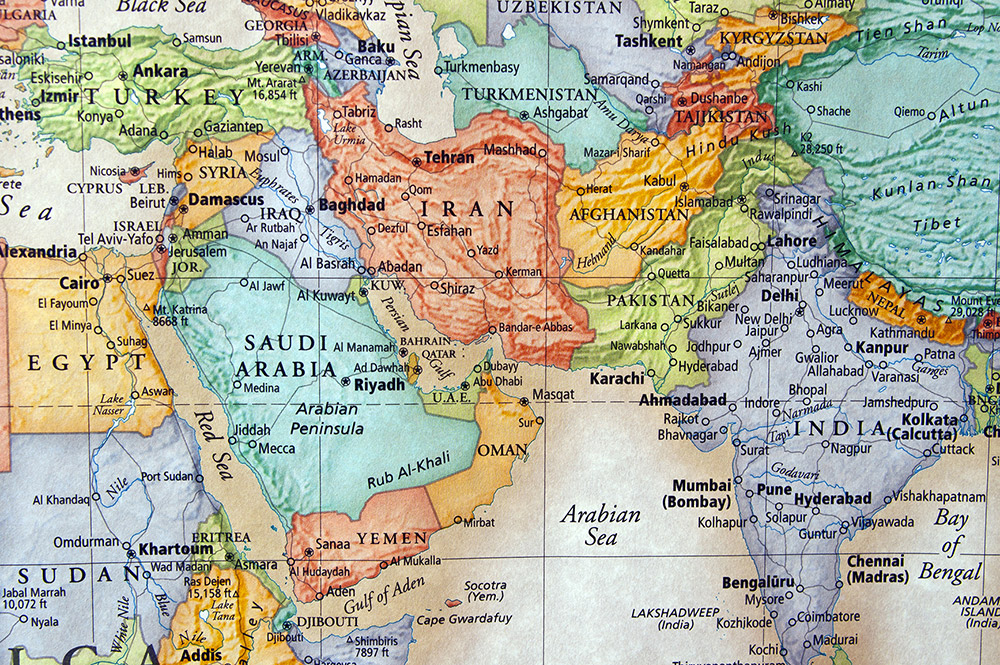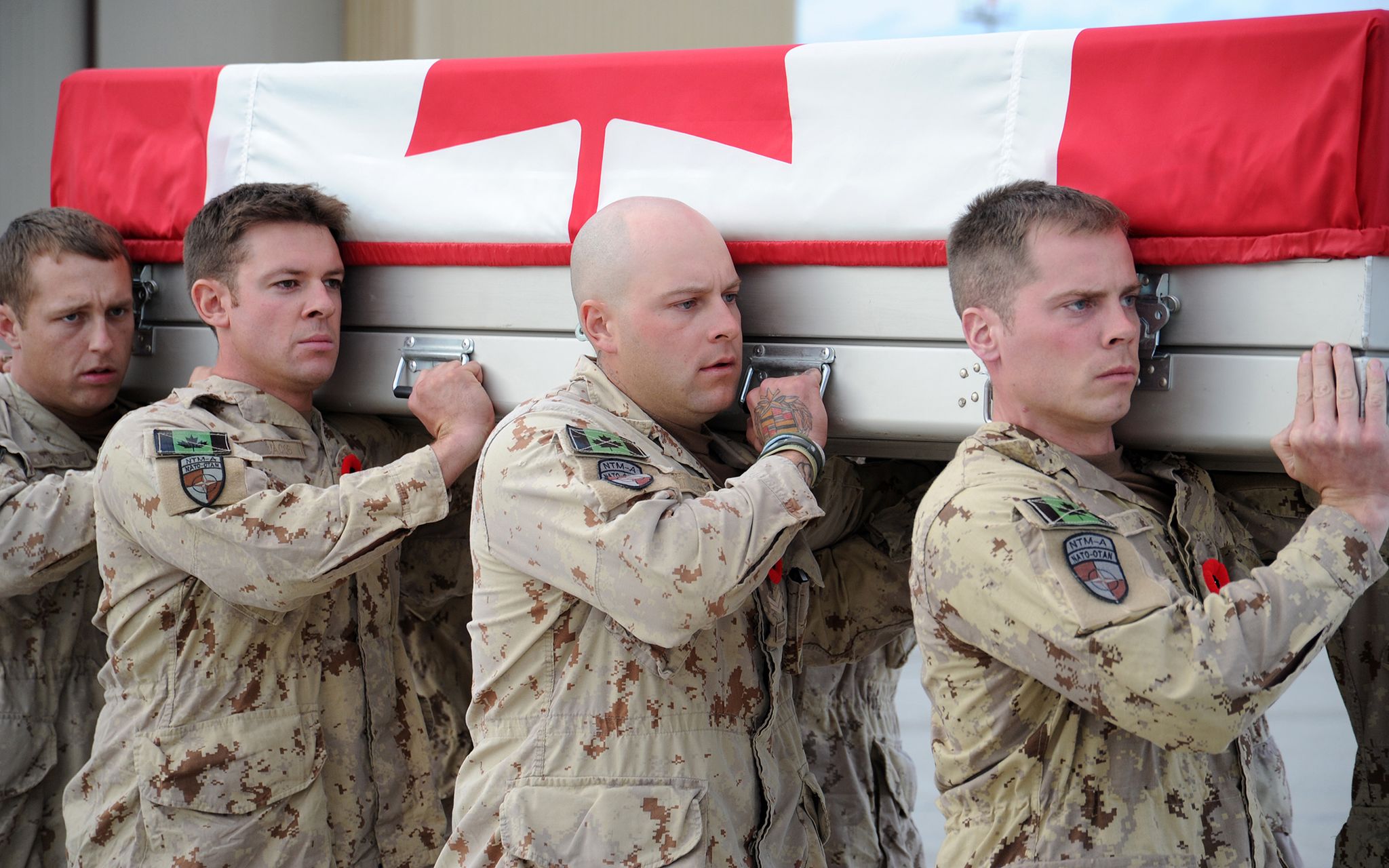The war in Afghanistan (2001–14) was Canada’s longest war and its first significant combat engagement since the Korean War (1950–53). After the 2001 terror attacks on the United States, Canada joined an international coalition to destroy the al-Qaeda terrorist network and the Taliban regime that sheltered it in Afghanistan. (See 9/11 and Canada). Although the Taliban were removed from power and the al-Qaeda network was disrupted, Canada and its allies failed to destroy either group, or to secure and stabilize Afghanistan. More than 40,000 Canadian Armed Forces members served in the 12-year campaign. The war killed 165 Canadians — 158 soldiers and 7 civilians. Many Canadian veterans of the war in Afghanistan suffer from post-traumatic stress disorder.

Key Facts About Canada and the War in Afghanistan
| Is Canada still fighting in Afghanistan? | No, the last Canadian troops left Afghanistan in March 2014. |
| How long was Canada involved in the war in Afghanistan? | Canadian forces were involved in the war in Afghanistan between 2001 and 2014. |
| How many Canadians fought in Afghanistan? | More than 40,000 members of the Canadian Armed Forces served in Afghanistan. |
| How many Canadians died during the war in Afghanistan? | In total, 165 Canadians died during the war in Afghanistan (158 soldiers, 7 civilians). More than 2,000 members of the CAF were wounded or injured during the war. |
9/11 Attacks
Al-Qaeda terrorists hijacked four airliners and used them to attack New York and Washington, DC, on 11 September 2001, killing almost 3,000 people (including 24 Canadians) and shocking the world. Al-Qaeda was an Islamist terror organization led by Osama bin Laden. The al-Qaeda leadership were based in Afghanistan, where they received safe haven from that country’s ultra-conservative, theocratic Taliban regime.

The day after the attacks, Canadian Prime Minister Jean Chrétien telephoned United States president George W. Bush to pledge “Canada’s complete support” for the Americans. The exact nature of this commitment became clear in October: Canada would take part in a US-led multinational campaign to invade Afghanistan, capture members of al-Qaeda, dismantle their training camps and overthrow the Taliban government. Canada’s campaign would be multifaceted, involving land, air and sea forces as well as civilian diplomatic and intelligence resources.
Invasion of Afghanistan
In late 2001, United States, British and other international forces invaded Afghanistan, and with the help of Afghan opposition militants toppled the Taliban regime in the capital city of Kabul. The US-led coalition hunted down Taliban and al-Qaeda insurgents across Afghanistan, including various mountain hideouts. In one such case, during a firefight with al-Qaeda members, US troops wounded and captured 15-year-old Omar Khadr, who was born in Canada.
Osama bin Laden escaped to Pakistan. He would not be found and killed by US forces until 2011.
A few dozen Canadian special forces troops participated in the 2001 invasion. They were followed in February 2002 by an infantry battle group (approximately 1,200 troops), sent to the southern Afghan province of Kandahar as part of a United States Army task force searching for insurgents in that area. The Canadians fought against al-Qaeda and Taliban forces, and provided protection for humanitarian operations and for Afghanistan’s new interim government.

The first Canadian deaths in Afghanistan occurred in April, when four soldiers with the Princess Patricia’s Canadian Light Infantry were killed in an accidental, “friendly fire” bombing incident by a United States pilot.
The bulk of Canadian ground forces returned home in July to wide public and media acclaim – a sign that the military’s efforts in Afghanistan were improving the reputation of Canada’s Armed Forces, which had suffered blows to their reputation and morale, and years of government neglect, during the 1990s.
DID YOU KNOW?
Omar Khadr was the only minor since the Second World War to be convicted of purported war crimes. He was imprisoned in Guantanamo Bay and Canada for almost 13 years. In 2010, the Supreme Court of Canada ruled that Khadr’s detainment violated “the principles of fundamental justice” and “the most basic Canadian standards about the treatment of youth suspects.” Despite repeated attempts by the Canadian government to keep him in prison, Khadr was released on bail in May 2015. In July 2017, he received $10.5 million in compensation from the government for Canada’s role in violating his constitutional rights (see Omar Khadr Case). In March 2019, an Alberta judge declared that Khadr had completed his war crimes sentence, making him a free man.
Naval Contribution
Canada sent warships to southwest Asia, as part of the United States-led counter-terrorism naval campaign, from 2001 to 2012. Afghanistan has no ocean borders, so the naval effort didn’t directly affect the military situation there. However, in patrolling and policing the Arabian Sea and the Gulf of Oman, the Navy contributed to general security in the region, while searching civilian vessels for wanted terrorists and for illegal drug shipments that might have been used to fund terrorist groups operating in the area.

The busiest naval deployment occurred during Operation Apollo, from 2001 to 2003, during which 15 Canadian warships from bases in Halifax and Esquimalt were sent to the region — Canada’s largest naval operation since the Second World War. In January 2002, as many as six Canadian ships, with 1,500 personnel, were operating simultaneously in the area.
Kabul and Kandahar
Canada’s main contribution to the war effort was the maintenance in Afghanistan of an Army battle group of approximately 2,000 infantry soldiers, along with at different times, armoured vehicles, tanks, artillery and other support units such as a field hospital in Kandahar. The Air Force also contributed tactical and transport helicopters, long-range transport aircraft and unmanned aerial reconnaissance vehicles.
The men and women of the battle group were drawn from Canada’s three professional, regular force brigades, augmented by part-time reservists. Soldiers were rotated in and out of Afghanistan on tours of duty, serving under the NATO-led International Stabilization Assistance Force (ISAF), which in 2004 was commanded by Canadian lieutenant-general Rick Hillier.
Smaller teams of soldiers, and volunteers from police forces across Canada, were also sent to mentor and train the Afghan National Army and Afghan National Police.
From 2003 to 2005, the Canadian battle group’s mission focused on providing security in the Afghan capital, Kabul, and helping to disarm Afghan militia units under the command of local warlords. There, despite occasional insurgent suicide bomber attacks, Canadians were mostly involved in patrolling, policing and the stabilization of the new Afghan government.
A second, more dangerous phase took place from 2006 to 2011 when the battle group was transferred to the southern Afghan city of Kandahar. By this time, the situation in much of the country had devolved into a full-blown counter-insurgency struggle. The Canadians were tasked with providing security across Kandahar province, and rooting out Taliban insurgents in the city and the surrounding rural districts. Canada also took over responsibility for a Provincial Reconstruction Team in Kandahar — a unit tasked with winning the “hearts and minds” of Afghan civilians in the area and supporting local government leaders.
In Kandahar, Canadian forces engaged in open combat against Taliban guerrilla fighters. With their professional skills and superior firepower, the Canadians won a series of battles, and defended Kandahar itself from Taliban takeover. However, these tactical victories meant little in the overall war. Every time insurgent forces were defeated in battle, they retreated, regrouped and returned in larger numbers, quietly infiltrating rural communities and Kandahar itself, influencing and intimidating the population, threatening security and destabilizing local government. Year after year, Canadian military commanders issued misleading claims that hundreds of Taliban fighters had been killed or fled, and that the Kandahar insurgency was on the verge of defeat. In fact, the insurgency grew, and security steadily worsened in the area from 2006 through the Canadians’ departure from Kandahar in 2011.
During the same period, Canadians bore witness to a steady stream of military funerals, as soldiers’ remains were returned home in flag-draped caskets. Most of the Canadians killed in Afghanistan died during the Kandahar operations, many from the Taliban’s roadside bombs, officially known as improvised explosive devices (IEDs), which targeted Canadian military convoys. Among the dead was 26-year-old Army Captain Nichola Goddard, killed by a rocket propelled grenade during a firefight with insurgents in May 2006 — the first Canadian female soldier ever killed in combat (see Women in the Military).
DID YOU KNOW?
The Canadian Forces Base Gagetown Cohort Study (2011) analyzed clinical data from a group of 792 Afghanistan-deployed combat and combat support personnel at a single base (see CFB Gagetown). The study found that about 20 per cent were diagnosed with PTSD up to four years after returning from duty. Higher rates of PTSD were found among lower-ranking personnel and personnel in the combat arms trade. As of March 2020, approximately 17 percent of Afghanistan veterans received a pension or disability award for PTSD. (See PTSD in Canada.)
These soldiers’ deaths appeared increasingly futile, since the greatest obstacle to defeating the insurgency was the vital support it received from neighbouring Pakistan. For decades, Pakistan’s military leadership had used the Taliban as a way of exercising proxy control over Afghanistan. Pakistan’s military and intelligence services were now recruiting, training, funding and providing safe haven for the Taliban insurgency (as well as hiding the remaining al-Qaeda leadership). The insurgency in Kandahar was impossible to contain, as long as the United States, Canada and NATO were unwilling to either take the fight across the border into Pakistan — a supposed ally – or to end Pakistan’s support for the Taliban.
Reconstruction Campaign
In addition to the military effort, Canada and other coalition countries worked to rebuild Afghanistan. The country’s challenges were staggering. The site of violent conflict since the late 1970s, the country was one of the poorest in the world. Most children did not attend school and illiteracy rates were high (see Literacy). Many local officials were corrupt. Warlords and tribal leaders exerted power in large areas of the country. Opium production provided drug money to warlords and the Taliban. By 2001, at the time of the invasion, most of the country was in ruins, without basic services such as paved roads or electricity, and most Afghans were living “in the dark ages,” according to the New York Times.

Canada spent $2.2 billion on development assistance from 2001 to 2014, making Afghanistan the largest recipient of Canadian aid during that time. Some of this aid was distributed by non-government organizations providing food, education and basic services to communities. In other cases, Canada ran polio vaccination and other health programs, and helped in the rebuilding of dams, roads, schools and other infrastructure. Other services — on governance support, prison and police administration and training — were provided by the Provincial Reconstruction Team (PRT) in Kandahar and its several hundred military and civilian personnel.
DID YOU KNOW?
Until 1978, about 1,000 Afghans were living in Canada. Following the 1978 coup led by the People’s Democratic Party of Afghanistan, the subsequent Soviet invasion and occupation of the country and continued war over the last four decades, the Afghan population in Canada has grown. According to Statistics Canada’s 2016 census, approximately 84,000 Afghans are living in Canada (see Afghan Canadians).
Canadian Forces Withdraw from Afghanistan
In Canada, public support for the war was high in the early years of the conflict, but began to wane in the fall of 2006, as Canadian casualties mounted in Kandahar (see Public Opinion). Although general support for the Armed Forces remained high, by 2007 more than half of Canadians surveyed said they believed the military campaign would fail.
A mission that began under the Liberal governments of prime ministers Jean Chrétien and Paul Martin, was supported and extended by Prime Minister Stephen Harper after his Conservatives took power in 2006. Although many Liberals in Parliament had supported the extension in May, by the end of 2006, the three main opposition parties — the Liberals, the Bloc Québecois and New Democrats — were all calling for Canada to end its combat mission in Afghanistan but continue with humanitarian aid and reconstruction.
Canada’s role was complicated in 2007 by a political scandal surrounding the treatment of Taliban prisoners captured by Canadians and handed over to Afghan security forces, who allegedly tortured the detainees. Under international law, Canada was responsible for the torture of prisoners captured by its soldiers. The detainee scandal dominated political debate in Canada for several months in 2007 — and resurfaced in 2009, threatening to topple Harper’s minority government — until Canada established a program for the monitoring of Taliban detainees in Afghan prisons.
Amid the detainee issue, the mounting Canadian casualties, and the military’s misleading claims of success in Kandahar, Canada stuck with its mission there until 2011, when Canadian combat operations ended, and responsibility for security in Kandahar was transferred back to the United States (whose military — despite a “surge” in troops to the region, faced the same security problems that had troubled the Canadian military for five years).
Most Canadian troops and hardware were brought home, although a small contingent of soldiers was stationed in Kabul, training and advising Afghan security forces. In March 2014, the Kabul mission closed and Canada’s 12-year military role in Afghanistan came to an end.
Significance and Legacy
Canada spent an estimated $18 billion fighting in Afghanistan and trying to reconstruct the country. The war took the lives of 158 Canadian soldiers and wounded or injured more than 2,000 others. Seven Canadian civilians were also killed — a diplomat, four aid workers, a government contractor and a journalist.
As of March 2020, approximately 17 percent of Canadian military personnel who took part in the War in Afghanistan received a Veterans Affairs Canada pension or disability award for post-traumatic stress disorder (PTSD). According to an investigation by the Globe and Mail, more than 70 Canadian soldiers and veterans who were deployed to Afghanistan had committed suicide by December 2017. “Many had post-traumatic stress disorder (PTSD) and other mental-health issues related to their military work, along with personal problems such as relationship breakdowns and financial stress.” More than 175 Canadian military personnel took their own lives between 2010 and 2020.

Debate continues over whether Canada succeeded. Some, such as the military commanders who led the Canadian battle group in Kabul and Kandahar, have said Canadian troops helped keep the Taliban insurgency at bay for eight years, buying time for Afghan security forces and government institutions to establish themselves. Certainly Canada and its coalition allies succeeded in disrupting al-Qaeda and toppling the Taliban regime — a responsibility of NATO members in the wake of the 9/11 attacks on the United States. Reconstruction aid and military support also helped to improve general living standards and raise parts of the country out of extreme poverty.
But others say Canada failed in its core mission to help secure Kabul and Kandahar from insurgent violence. Said Policy Options magazine in 2014: “In the end, the Canadian exertions and sacrifices in Kandahar did little to change the underlying conditions of this conflict.” When Canada departed Afghanistan in 2014, the Taliban and al-Qaeda insurgencies were destabilizing the government and threatening the population. According to Amnesty International, a human rights watchdog group, the Taliban controlled more Afghan territory in 2017 than at any time since 2001. By 2017, the insecurity was compounded by the added violence of another terror group, the Islamic State.
Afghanistan was a counter-insurgency war. The Canadian Armed Forces faced the same problems that have confounded other modern armies in counter-insurgency conflicts — such wars are almost impossible to resolve on the battlefield and require instead political solutions. The Taliban insurgency was an instrument of neighbouring Pakistan. Without the means or the will among Canada and NATO to engage Pakistan politically, or to take the war across the border, there was little chance that Canadian forces could secure and build a safe Afghanistan.

 Share on Facebook
Share on Facebook Share on X
Share on X Share by Email
Share by Email Share on Google Classroom
Share on Google Classroom




